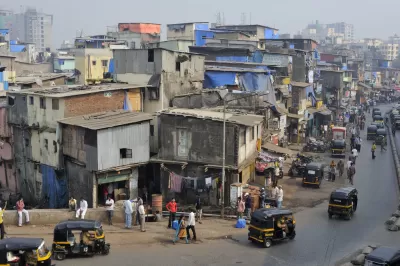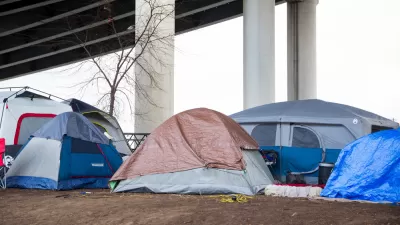In photographs and written observations of a recent trip to Mumbai, India, former SPUR Director Jim Chappell queries how the lives of the poorest people there compare to the lives of low-income Americans.

India has long been emblematic of poverty and inequality. Mother Teresa is known for her work with poor of Kolkata (fka Calcutta). But U.S. poverty and inequality has been on the rise for decades, with the visibility of abject poverty at a nearly unprecedented level. In many U.S. cities, the co-existence of the housed and the homeless is strained, as the number of homeless living in streets and parks diminishes the livability of the cities for even its wealthier citizens. Jim Chappell, a planning consultant and former Executive Director of SPUR, recently traveled to India. As planners and architects can relate, recreational travel for those in the planning professions is never fully recreational. Travel quickly turns into an inquiry of what works differently in the respective destination.
Chappell was struck by the impression that the poorest people of India seemed less disconnected and less socially isolated than their counter-parts in the United States. Additionally, they seemed to have access to work and while housing was substandard, he saw far fewer people sleeping exposed, in the open, in public spaces. While admittedly not an academic or scientific, Chappell provides some food for thought about how we in the United States are failing our poor:
India is a tremendously different culture, an ancient culture with religions and family structures and social structures different from ours. I am not qualified to draw any conclusions from it. But somehow they have managed to provide work that is necessary for society and meaningful enough to the individuals that they do it. And the people have a place to live, very substandard though it may be.
For more detail on Chappell’s observation, as well as photographs, please visit the source article.
FULL STORY: What are we doing wrong?

Alabama: Trump Terminates Settlements for Black Communities Harmed By Raw Sewage
Trump deemed the landmark civil rights agreement “illegal DEI and environmental justice policy.”

Planetizen Federal Action Tracker
A weekly monitor of how Trump’s orders and actions are impacting planners and planning in America.

The 120 Year Old Tiny Home Villages That Sheltered San Francisco’s Earthquake Refugees
More than a century ago, San Francisco mobilized to house thousands of residents displaced by the 1906 earthquake. Could their strategy offer a model for the present?

Ken Jennings Launches Transit Web Series
The Jeopardy champ wants you to ride public transit.

BLM To Rescind Public Lands Rule
The change will downgrade conservation, once again putting federal land at risk for mining and other extractive uses.

Indy Neighborhood Group Builds Temporary Multi-Use Path
Community members, aided in part by funding from the city, repurposed a vehicle lane to create a protected bike and pedestrian path for the summer season.
Urban Design for Planners 1: Software Tools
This six-course series explores essential urban design concepts using open source software and equips planners with the tools they need to participate fully in the urban design process.
Planning for Universal Design
Learn the tools for implementing Universal Design in planning regulations.
Clanton & Associates, Inc.
Jessamine County Fiscal Court
Institute for Housing and Urban Development Studies (IHS)
City of Grandview
Harvard GSD Executive Education
Toledo-Lucas County Plan Commissions
Salt Lake City
NYU Wagner Graduate School of Public Service





























